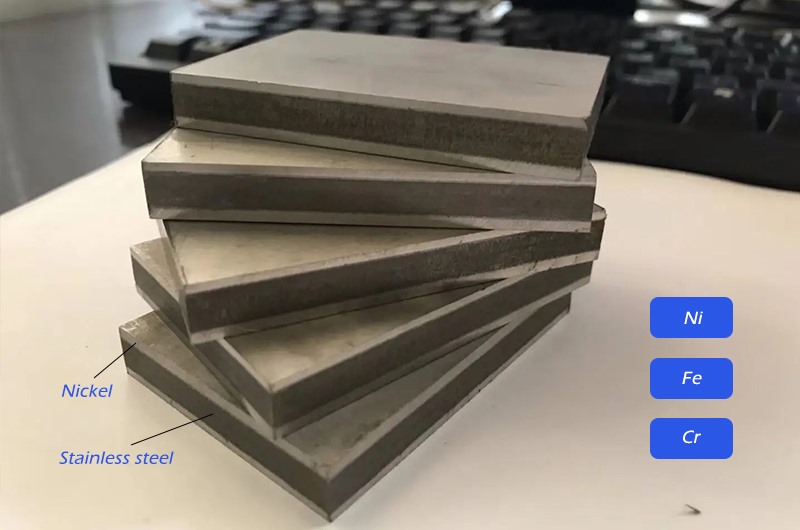
The slabs were heated to 1200 °C and rolled for 120 min. After 7 passes of rolling, the total reduction rate of the sheet is 67.65%. According to this process, three groups of slabs are rolled, and the rolling is terminated after 3, 5, and 7 passes of rolling, respectively, and water cooling is performed to reduce the temperature of the plate to below 260°C.
With the increase of rolling passes, the grains of 316H nickel-stainless steel clad plate are deformed and the distortion becomes serious. A fine-grained group appears near the interface, and the part far from the interface is in a strip-like rolling state; The rolling temperature is higher, and the Ni layer is always equiaxed at the end of rolling.
With the increase of rolling passes, the diffusion depth of Ni, Fe and Cr elements in nickel-stainless steel clad plate gradually increases and forms metallurgical bonds; the size of Mo atoms is larger and the diffusion effect is weak, and at the interface on the 316H side Mo element enrichment bands are produced nearby.
Under the rolling conditions of high temperature and low oxygen environment, Mn oxides are formed at the composite interface, and the oxides are gradually broken with the progress of rolling, and finally distributed in chains at the interface.











